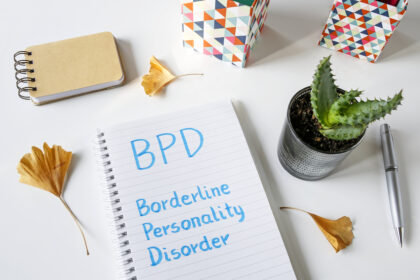Defining Borderline Personality Disorder (BPD)
Borderline Personality Disorder (BPD) is defined as a chronic psychiatric disorder characterized by mood instability, disrupted interpersonal relationships, impulsivity, and self-harming behavior (Paris, 2005). Unfortunately, these issues can significantly complicate treatment and proper medical care. The symptoms make life extremely hard for the suffering BPD victim. And although BPD individuals will generally improve with time, much of their life can be marked with a variety of tumultuous events which are commonly known as “episodes.”
When Does BPD Onset?
Borderline Personality Disorder usually begins in late adolescence or early adulthood (Crick et al., 2007). This could be because an individual is just beginning to form their adult personality in this phase of life, and they are conflicted as to who they are and unsure of their self-image. It could also be because this is the age where adult stress begins to chip away at reality. Regardless of the reason for the timeframe, early adulthood is the most common timeframe for the onset of the condition (2007). Still, it has been proposed by numerous sources that the condition can materialize at any age.
Etiology of BPD
Etiology is the study of causes behind a condition or illness. Because BPD is so complex, the etiology for any given individual who suffers from BPD may be wildly different. Still, there are some generalized etiological traits and scenarios which seem to be present in many, if not most, BPD victims. These etiological conditions include but are not limited to:
- Genetic factors – oftentimes other family members, especially parents will have suffered from either BPD or another mental illness themselves (Bradley et al., 2005).
- Abnormalities in the brain – There is research which has proven BPD patients may have abnormalities in certain parts of the brain associated with emotion and mood regulation (Lis et al., 2007). These parts of the brain also control things like aggression and impulsive behavior.
- Other hereditary factors – If any close relative has BPD, it is possible an individual may be at a higher risk for contracting the illness themselves (Bradley et al., 2005).
- Childhood environmental stress – A lot of the people who have BPD seem to have stressful childhood experiences which may include neglect, sexual abuse, or other traumatic childhood incidents.
- Separation from parents – Children who have been separated from their parents, especially their father figure, are at a higher likelihood of developing BPD in early adulthood (Bozzatello et al., 2021).
It is reasonable to suggest that better understanding the symptoms surrounding the condition is the first step in the process towards recovery.
List of BPD Symptoms
Although every case is different, BPD is often characterized by a common set of symptoms. These symptoms may include:
- Intense fear of abandonment
- Unbearable or stressful mood swings which can last hours or days
- Patterns of unstable relationships (whether romantic, with friends, or with family)
- Swinging thoughts about others (romanticizing or idealizing an individual one day and then deeming them cruel or uncaring the next day)
- Quick changes in self-identity or self-image
- Quickly shifting goals, values, or morals
- Anxiety-ridden periods of paranoia
- Loss of contact with reality
- Intense impulsivity
- Risky behavior (reckless driving, unprotected sex, gambling, heavy substance use, reckless driving)
- Self-sabotaging behavior
- The development of Substance Use Disorders (SUDs)
- Irritability
- Shame or guilt
- Intense jealousy
- Feelings of emptiness or meaninglessness
- Inappropriate and often irrational anger
- Spiteful behavior
- & More
Some BPD individuals exhibit all of these symptoms, while others may only harbor a couple of them. Regardless, the condition can be very difficult to manage.
What are BPD Episodes?
BPD episodes are periods of intense emotional dysregulation, or in other words, incidents where emotional response is so poorly regulated it does not fall within the normal confines of acceptable emotional range. As a child or young adolescent these incidents may be akin to intense temper tantrums. As an adult, they may be more destructive, sometimes even violent. Many BPD patients describe destroying objects, vehicles, personal property (both their own and other people’s), and sometimes entire homes. Unfortunately, many times these episodes can also be accompanied by parasuicidal (thoughts of suicide, talk of suicide, self-harm, etc.) or suicidal behavior itself.
Oftentimes these episodes are followed by periods of intense grief and guilt. BPD individuals often feel heavy embarrassment after an episode. They may even feel the need to “make it up” to those individuals who witnessed the episode. Sometimes this means more than just apologizing. This makes sense, as to the BPD individual, the harm they have perpetrated often far exceeds a mere apology.
How Do I Know If I (or a Loved One) Has BPD?
Detecting BPD in an individual is not always easy. In fact, some individuals live their entire lives without ever realizing they are afflicted. Other times it may take an outside perspective, such as a loved one, a psychologist, therapist, or another medical professional to determine an individual may have BPD. This is especially true given the extremity in terms of how the symptoms manifest between individuals. As previously mentioned, patient backgrounds, environmental factors, biological factors, and prior exposure to the condition all contribute to the possible etiology of the condition.
Sensitive Stability has composed an article specifically to help someone recognize if they, or someone they love, has Borderline Personality Disorder. This article is entitled “Is BPD Me?” and it discusses the symptoms, along with their typical manifestations, more in depth.
Important Disclaimer: If you or someone you know is having a medical emergency, experiencing a BPD episode and needs help, or exhibiting parasuicidal or suicidal behavior, please contact emergency services immediately. Additionally, there are many free suicide hotlines including the National Suicide Prevention Lifeline at 1-800-273-8255.
References
Bozzatello, P., Garbarini, C., Rocca, P., and Bellino, S., (2021). Borderline Personality Disorder: Risk Factors and Early Detection, Diagnostics (Basel, Switzerland), 11(11), 2142. DOI: https://doi.org/10.3390/diagnostics11112142
Bradley, R., Jenei, J., and Westen, D., (2005). Etiology of Borderline Personality Disorder, The Journal of Nervous and Mental Disease, 193(1), 24-31. DOI: 10.1097/01.nmd.0000149215.88020.7c
Crick, N., Woods, K., Murray-Close, D., and Han, G., (2007). The development of borderline personality disorder: Current progress and future directions, In A. Freeman & M. A. Reinecke (Eds.), Personality disorders in childhood and adolescence, John Wiley & Sons Inc., 341–384.
Lis, E., Greenfield, B., Henry, M., Guilé, J., and Dougherty, G. (2007). Neuroimaging and genetics of borderline personality disorder: a review, Journal of psychiatry & neuroscience, JPN, 32(3), 162–173. PMID: 17476363.
Paris, J., (2005). Borderline personality disorder, Review Synthese, CMAJ, 172(12), 1579-1583. DOI: 10.1503/cmaj.045281




